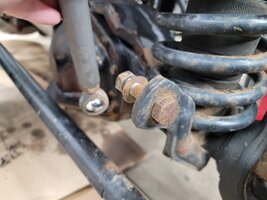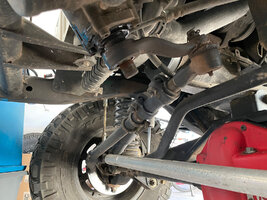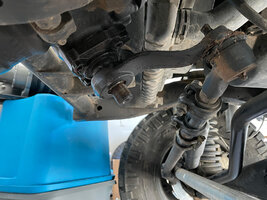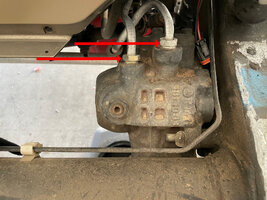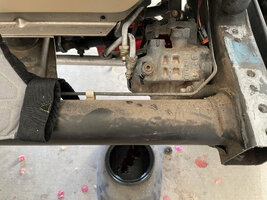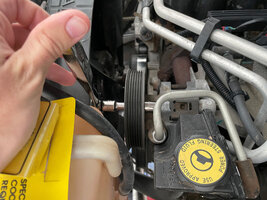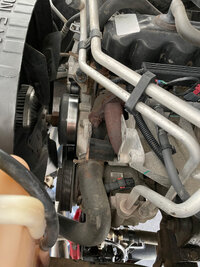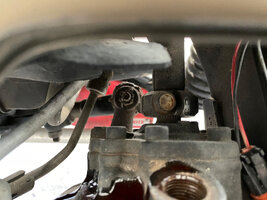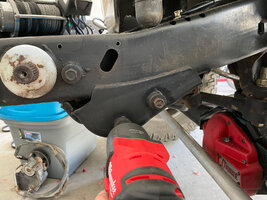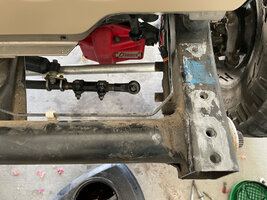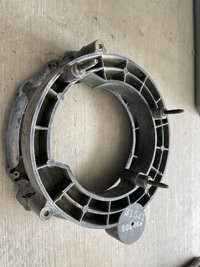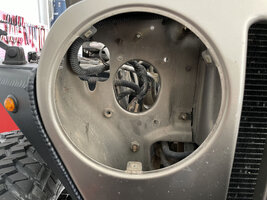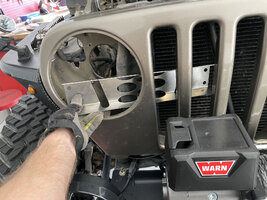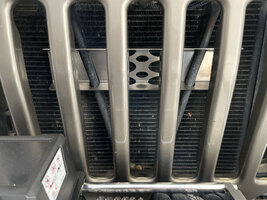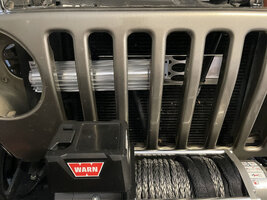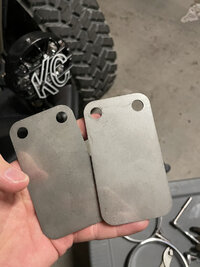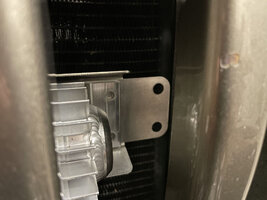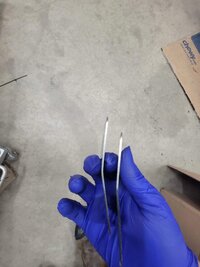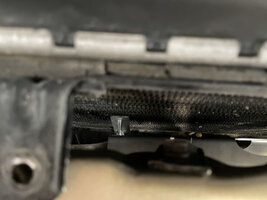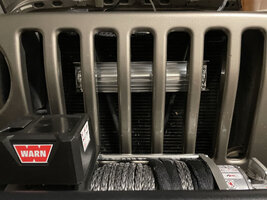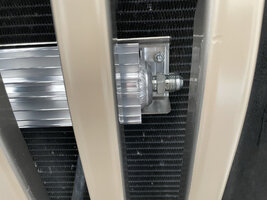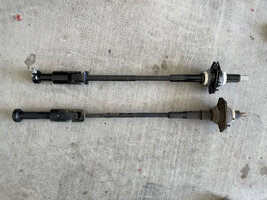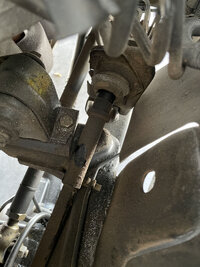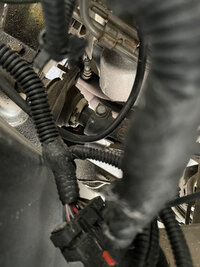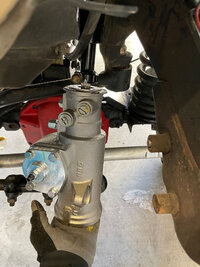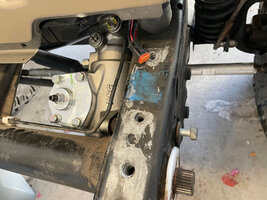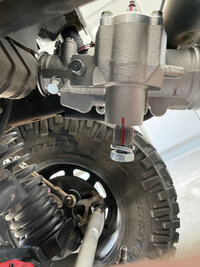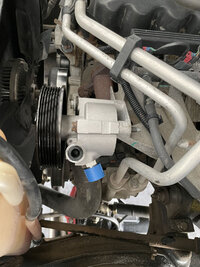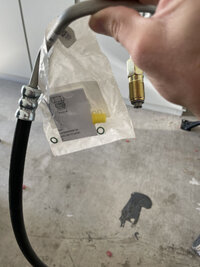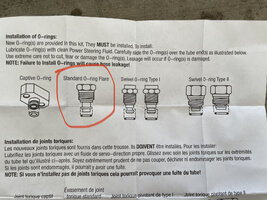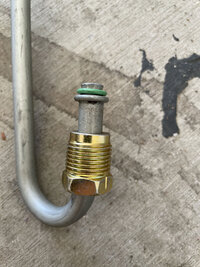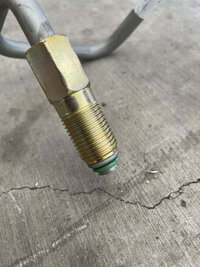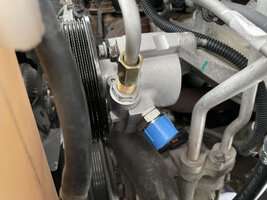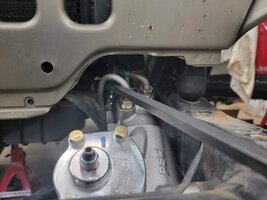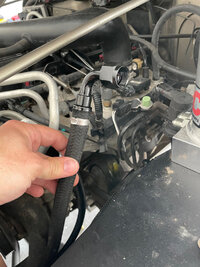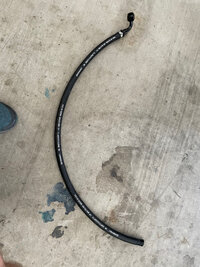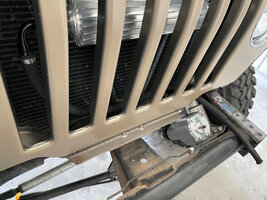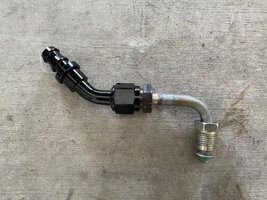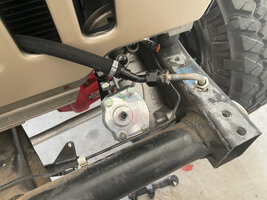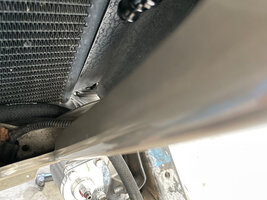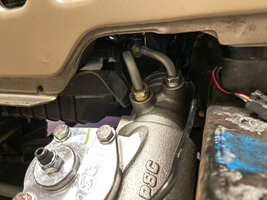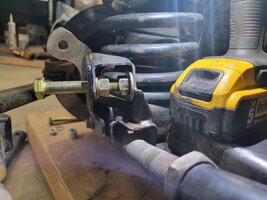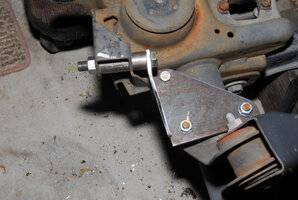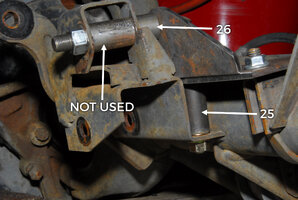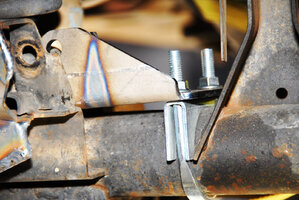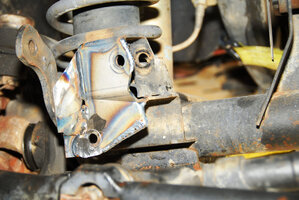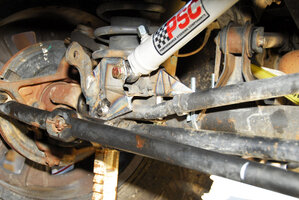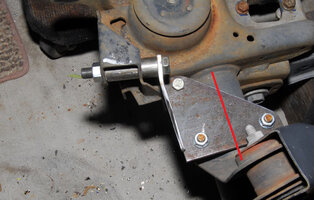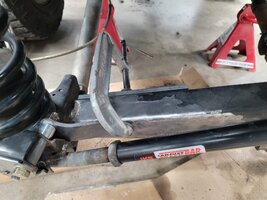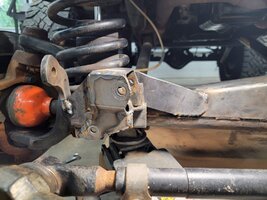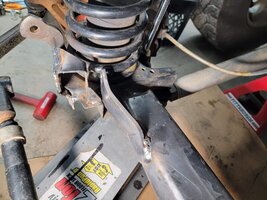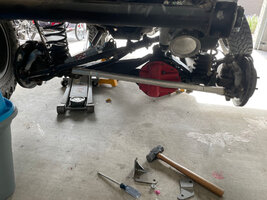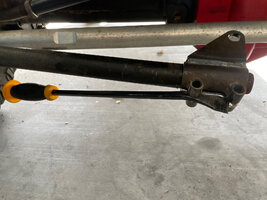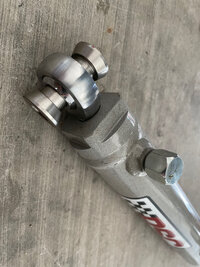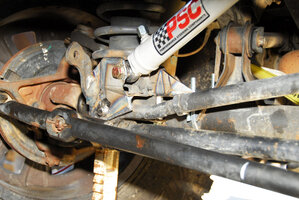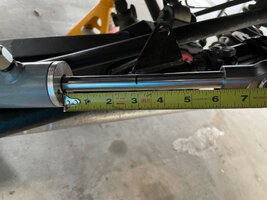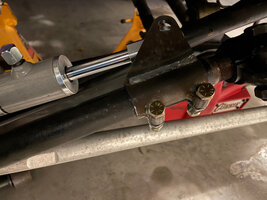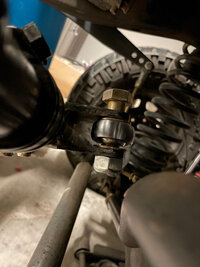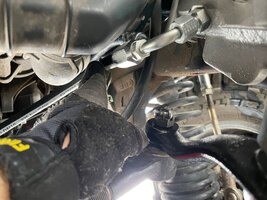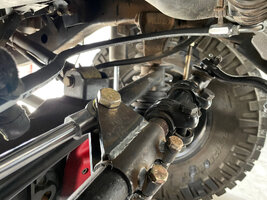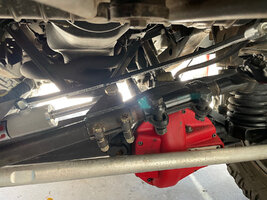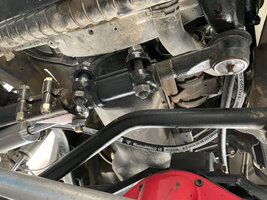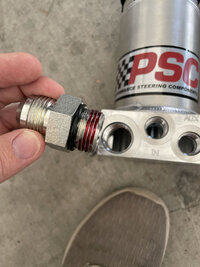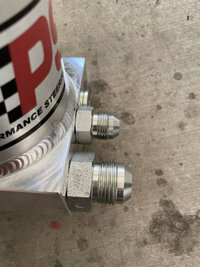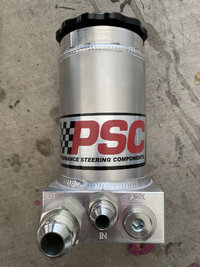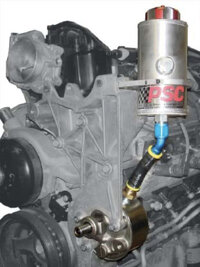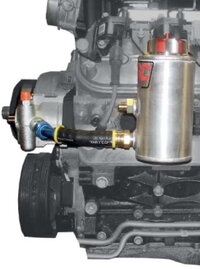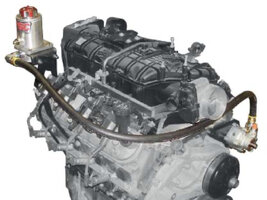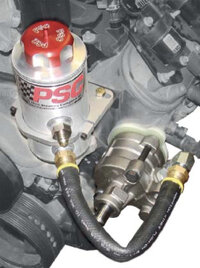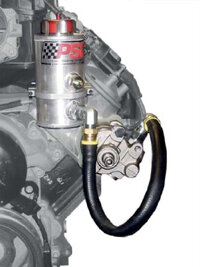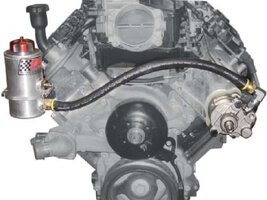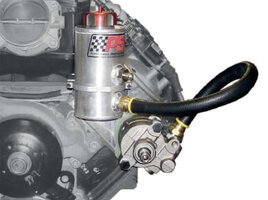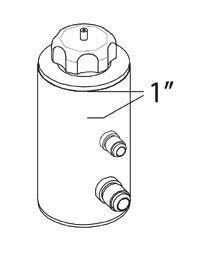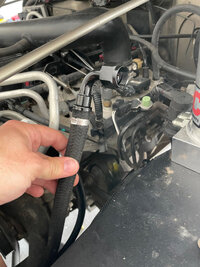First and foremost, thanks to Blaine for making this happen. Additional thanks goes out to @toximus for helping to improve this write-up.
This thread is to serve as the official installation instructions for the Black Magic nearly bolt-in PSC hydro assist kit for Currie steering. This kit assumes that you have the Currie steering and that you've pieced together the other remaining parts you'll need from PSC. Take your time installing the hydro-assist. While it's not overly difficult, there are a lot of small things to pay attention to to ensure a proper installation.
Parts needed from PSC to complete the install
Other parts needed to complete the install
If you have a 2003-2006 TJ you may consider using a lower steering shaft from a 97-02 TJ instead of the common shortening of the 03-06 shaft. The PSC steering gear is the same body size as the 97-02 which makes it longer than the 03-06. The shortened shaft method develops slap in the slip section on some.
You'll also need a class 8.8 M8x1.25 25mm length bolt.
Finally, 03-06 automatic models with AC need a belt size one smaller because PSC's CBR pump comes with a slightly smaller pulley. K060878 is the right belt.
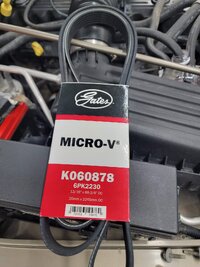
Tools needed for install
Important Installation Notes
Layout & Routing Diagram
Please pay close attention to this diagram I've made. This is the layout for all the parts in the kit, where they go, and the routing for all the hoses. This diagram alone should take nearly all the guess work out of the installation, so it's imperative that you study and understand it. Each part is labeled with a number which I will reference throughout the instructions.
Click to enlarge image

Part index
Parts listed below in red need to be purchased directly from PSC (they are mentioned and linked to at the beginning of these instructions). The parts in black are the ones that come in the Black Magic nearly bolt-in PSC hydro assist kit for Currie steering. Parts 1-2 are in the check valve kit. 3-Reservoir mounting bracket is not used but is included with reservoir. 3-7 are included with the reservoir.
Installation Instructions
See below for step-by-step instructions. Click here if you'd like a copy of the instructions in PDF format so you can print them out and take them to the garage with you.
This thread is to serve as the official installation instructions for the Black Magic nearly bolt-in PSC hydro assist kit for Currie steering. This kit assumes that you have the Currie steering and that you've pieced together the other remaining parts you'll need from PSC. Take your time installing the hydro-assist. While it's not overly difficult, there are a lot of small things to pay attention to to ensure a proper installation.
Parts needed from PSC to complete the install
- PSC steering gearbox (new, not reman)
- PSC remote reservoir with -12 outlet and -8 return
- PSC CBR pump with -12 inlet
- -12 45° and 90° fittings
- -12 hose (14-18")
- Positive pressure check valve
Other parts needed to complete the install
If you have a 2003-2006 TJ you may consider using a lower steering shaft from a 97-02 TJ instead of the common shortening of the 03-06 shaft. The PSC steering gear is the same body size as the 97-02 which makes it longer than the 03-06. The shortened shaft method develops slap in the slip section on some.
You'll also need a class 8.8 M8x1.25 25mm length bolt.
Finally, 03-06 automatic models with AC need a belt size one smaller because PSC's CBR pump comes with a slightly smaller pulley. K060878 is the right belt.

Tools needed for install
- Complete set of 3/8" and 1/2" sockets
- 3/8" and 1/2" ratchets
- Various lengths of 3/8" and 1/2" extensions
- Torque wrench
- Impact gun (will make your life easier)
- 33mm impact socket or 1 5/16" SAE
- Cutting wheel
- Pry bars
- Work bench with vise
- Heat gun
- Oetiker clamp tool
- Red Loctite
- Pitman arm puller (this will make your life easier, trust me)
Important Installation Notes
- Park the Jeep with the wheels straight. This is so that the steering wheel will be centered when you strap in the steering wheel to prevent it from damaging the clock spring.
- All low pressure hoses are push lock. Low pressure hoses go on the return side (or everything after the steering gear through the cooler back to the reservoir). All low pressure hoses also get Oetiker clamps.
- High pressure hoses all use the screw together field serviceable ends. All the high pressure stuff is -6 including the 3/8" OEM power steering hose from the pump to the steering gear inlet side.
- All fittings with threads either straight or tapered get red liquid Loctite at the following locations:
- -8 return adapters into each end of the cooler. Just the adapter, not the push lock fitting that goes into the hose.
- -12 male into the reservoir for the feed hose to the pump. It is O-ring Boss or straight threads with an o-ring. It will seep fluid and back out when you try to remove the flare fitting from it if you don't use red Loctite on it.
- -8 male return from cooler same thing. ORB, will seep and loosen without red Loctite.
- Only low pressure hoses get Oetiker clamps. Low pressure hoses are everything after the steering gearbox, through the cooler, and back to the reservoir.
Layout & Routing Diagram
Please pay close attention to this diagram I've made. This is the layout for all the parts in the kit, where they go, and the routing for all the hoses. This diagram alone should take nearly all the guess work out of the installation, so it's imperative that you study and understand it. Each part is labeled with a number which I will reference throughout the instructions.
Click to enlarge image
Part index
Parts listed below in red need to be purchased directly from PSC (they are mentioned and linked to at the beginning of these instructions). The parts in black are the ones that come in the Black Magic nearly bolt-in PSC hydro assist kit for Currie steering. Parts 1-2 are in the check valve kit. 3-Reservoir mounting bracket is not used but is included with reservoir. 3-7 are included with the reservoir.
- Positive pressure check valve
- Positive pressure check valve line and fitting
- Reservoir mounting bracket
- PSC remote reservoir with -12 outlet and -8 return
- Auxiliary port plug
- -8 return adapter
- -12 male adapter
- -12 90° fitting
- -12 hose
- -12 45° fitting
- PSC CBR pump with -12 inlet, OEM style outlet
- 3/8" OEM power steering hose
- PSC steering gearbox
- -6 field serviceable high pressure hose end (4)
- -6 high pressure hose
- Modified assist cylinder
- Draglink clamp
- Cylinder bolt
- Clamp pinch bolt (2)
- Stabilizer / track bar mount reinforcement plate
- Cylinder mount
- 1/2" cylinder bolt
- 3/8" cylinder mount tie-in bolt
- Misalignment spacers
- Cylinder mount spacer
- Cylinder mount tie-in spacer
- Cylinder mount axle clamp
- -8 male return adapter
- -8 45° push lock
- -8 low pressure push lock hose
- -8 90° push lock (3)
- -8 x 3/8" NPT adapter (2)
- Cooler mount
- Heat sink cooler
- Cooler stud plate with hardware (2)
- Cooler mount to v-bar capture brackets (2)
Installation Instructions
See below for step-by-step instructions. Click here if you'd like a copy of the instructions in PDF format so you can print them out and take them to the garage with you.


